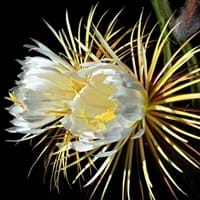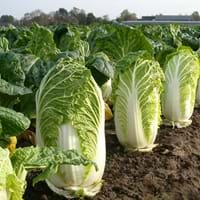Life Span
Perennial
Annual or Biennial
Type
Cactus or Succulent, Perennial
Vegetable
Origin
North America, Central America, South America
Europe
Types
princess of the night, Honolulu queen
Blues F1, Chinese Express, Monument
Number of Varieties
Not Available
Habitat
Desert, Semi desert
agricultural areas
USDA Hardiness Zone
9-14
Not Available
AHS Heat Zone
12 - 10
6-1
Sunset Zone
H1, H2, 12, 13, 15, 16, 17, 20, 21, 22, 23, 24
A1, A2, A3, H1, H2, 1a, 1b, 2a, 2b, 3a, 3b, 4, 5, 6, 7, 8, 9, 10, 11, 12, 13, 14, 15, 16, 17, 18, 19, 20, 21, 22, 23, 24
Habit
Narrow Upright/Fastigiate
Clump-Forming
Flower Color
Light Pink, White
Yellow
Flower Color Modifier
Bicolor
Bicolor
Fruit Color
Pink, Purple, Salmon, Violet
Not Available
Leaf Color in Spring
Light Green
Light Green
Leaf Color in Summer
Green, Dark Green
Not Available
Leaf Color in Fall
Green
Not Available
Leaf Color in Winter
Green
Not Available
Leaf Shape
Succulent
Cushion
Plant Season
Fall, Spring, Summer, Winter
Spring, Summer, Fall, Winter
Sunlight
Full Sun, Partial Sun
Full Sun, Partial Sun
Type of Soil
Loam, Sand
Loam, Sand
The pH of Soil
Acidic, Alkaline, Neutral
Neutral
Soil Drainage
Well drained
Well drained
Bloom Time
Late Spring, Spring
Spring, Summer, Late Winter
Tolerances
Drought
Drought
Where to Plant?
Container, Ground, Pot
Ground
How to Plant?
Grafting, Seedlings, Stem Planting
Seedlings, Transplanting
Plant Maintenance
Medium
Medium
Watering Requirements
Average Water Needs, Do not let dry out between waterings, Do Not over Water, Never Over-water, Requires consistently moist soil, Requires regular watering
Prefer drip-irrigation instead of Over-head watering
In Summer
Lots of watering
Ample Water
In Spring
Average Water
Moderate
In Winter
Less Watering
Average Water
Soil pH
Acidic, Alkaline, Neutral
Neutral
Soil Type
Loam, Sand
Loam, Sand
Soil Drainage Capacity
Well drained
Well drained
Sun Exposure
Full Sun, Partial Sun
Full Sun, Partial Sun
Pruning
Prune to stimulate growth, Remove damaged leaves, Remove dead branches, Remove dead leaves
No pruning needed
Fertilizers
fertilize every 2-3 weeks while growing
20-20-20 amount, Compost
Pests and Diseases
Scale
Aphids, Beetles, Black rot, Blackleg, Cabbage looper, Cabbageworm, Clubroot, Flea Beetles, Nematodes, Purple Blotch, Slugs, Snails
Plant Tolerance
Drought
Drought
Flower Petal Number
Semi-Double
Single
Fragrant Bark/Stem
No
Yes
Foliage Texture
Bold
Coarse
Foliage Sheen
Matte
Not Available
Allergy
Diarrhea, Nausea, Vomiting
Not Available
Aesthetic Uses
Beautification, Landscape Designing, Showy Purposes
Not Used For Aesthetic Purpose
Beauty Benefits
Improve hair condition, Improve skin condition
For treating wrinkles, Good for skin, Remove blemishes, Treatment of Dark Spots
Environmental Uses
Air purification
soil stabilisation
Medicinal Uses
Antioxidants, cholesterol-lowering, Fever, Heart problems, Itching, Menstrual Disorders, Rheumatism, Treat Parasitic Intestinal Worms
Folate, Low calories, Vitamin A, Vitamin C, Vitamin K
Part of Plant Used
Flowers, Stem
Whole plant
Other Uses
Decoration Purposes, Economic Purpose, Employed in herbal medicine, Medicinal oil, Showy Purposes, Used as Ornamental plant, Used for its medicinal properties
Used As Food, Used for its medicinal properties
Used As Indoor Plant
Yes
No
Used As Outdoor Plant
Yes
Yes
Garden Design
Container
Container, Edible, Herb / Vegetable
Botanical Name
CEREUS
BRASSICA rapa 'Little Jade'
Common Name
Night blooming cereus
Little Jade Napa Cabbage, Napa Cabbage
In Hindi
cereus
नापा पत्तागोभी
In German
cereus
Chinakohl
In French
cereus
Napa chou
In Spanish
cereus
Lechuga de Napa
In Greek
cereus
Νάπα Λάχανο
In Portuguese
cereus
Repolho Napa
In Polish
cereus
Kapusta Napa
In Latin
cereus
Napa Brassica
Phylum
Tracheophyta
Magnoliophyta
Class
Magnoliopsida
Magnoliopsida
Order
Caryophyllales
Capparales
Family
Cactaceae
Brassicaceae
Genus
Selenicereus
Brassica
Clade
Angiosperms, Core eudicots, Eudicots
Not Available
Tribe
Hylocereeae
Not Available
Subfamily
Cactoideae
Not Available
Number of Species
Not Available
Not Available
Season and Care of Cereus and Napa Cabbage
Season and care of Cereus and Napa Cabbage is important to know. While considering everything about Cereus and Napa Cabbage Care, growing season is an essential factor. Cereus season is Fall, Spring, Summer and Winter and Napa Cabbage season is Fall, Spring, Summer and Winter. The type of soil for Cereus is Loam, Sand and for Napa Cabbage is Loam, Sand while the PH of soil for Cereus is Acidic, Alkaline, Neutral and for Napa Cabbage is Neutral.
Cereus and Napa Cabbage Physical Information
Cereus and Napa Cabbage physical information is very important for comparison. Cereus height is 250.00 cm and width 40.00 cm whereas Napa Cabbage height is 20.30 cm and width 12.00 cm. The color specification of Cereus and Napa Cabbage are as follows:
Cereus flower color: Light Pink and White
Cereus leaf color: Light Green
Napa Cabbage flower color: Yellow
- Napa Cabbage leaf color: Light Green
Care of Cereus and Napa Cabbage
Care of Cereus and Napa Cabbage include pruning, fertilizers, watering etc. Cereus pruning is done Prune to stimulate growth, Remove damaged leaves, Remove dead branches and Remove dead leaves and Napa Cabbage pruning is done No pruning needed. In summer Cereus needs Lots of watering and in winter, it needs Less Watering. Whereas, in summer Napa Cabbage needs Ample Water and in winter, it needs Average Water.





